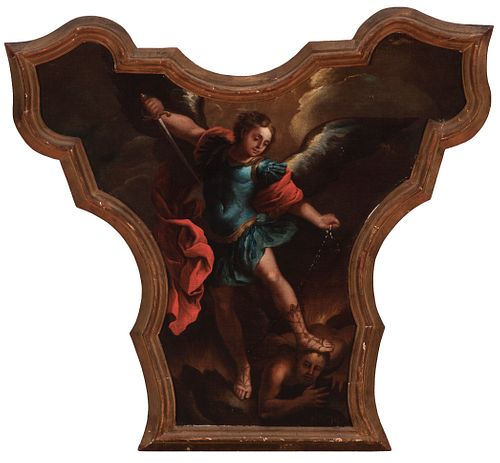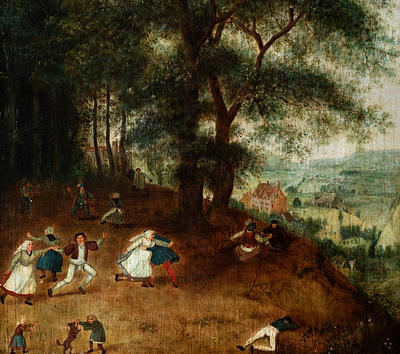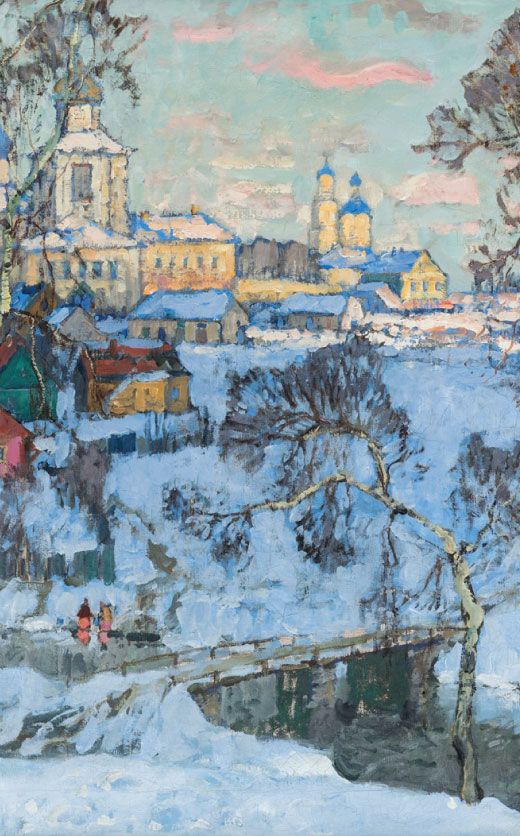Attributed to ANTONIO BALESTRA (Verona, Italy, 1666 - 1740); Italian school; 18th century "San Miguel Arcangel". Oil on canvas. Relined.
Lot 73
About Seller
Setdart Auction House
Carrer Aragó 346
Barcelona
Spain
Setdart Subastas was born in 2004 and is currently the first online art auction in Spain with solidity, prestige and reliability guaranteed by our more than 60,000 users. Setdart has a young, dynamic and enterprising team ready to successfully manage the purchase and sale of art works through custom...Read more
Estimate:
EUR€4,000 - EUR€5,000
$4,301.08 - $5,376.34
Absentee vs Live bid
Two ways to bid:
- Leave a max absentee bid and the platform will bid on your behalf up to your maximum bid during the live auction.
- Bid live during the auction and your bids will be submitted real-time to the auctioneer.
Bid Increments
| Price | Bid Increment |
|---|---|
| EUR€0 | EUR€10 |
| EUR€200 | EUR€25 |
| EUR€500 | EUR€50 |
| EUR€1,000 | EUR€100 |
| EUR€3,000 | EUR€200 |
| EUR€5,000 | EUR€500 |
| EUR€10,000 | EUR€1,000 |
| EUR€20,000 | EUR€2,000 |
| EUR€50,000 | EUR€5,000 |
About Auction
By Setdart Auction House
Jun 30, 2021
Set Reminder
2021-06-30 08:30:00
2021-06-30 08:30:00
America/New_York
Bidsquare
Bidsquare : Old Masters
https://www.bidsquare.com/auctions/setdart-auction-house/old-masters-7134
Setdart Auction House sofia@setdart.com
Setdart Auction House sofia@setdart.com
- Lot Description
Attributed to ANTONIO BALESTRA (Verona, Italy, 1666 - 1740); Italian school; 18th century "San Miguel Arcangel". Oil on canvas. Relined. Presents vintage frame and slight repaints. Measures: 65 x 71 cm; 62 x 81 cm (frame). This painting of purely baroque language depicts the archangel St. Michael, dressed in armor, with large wings spread. For its technical characteristics the work is related to the Italian painter and engraver of the Republic of Venice, Antonio Balestra left his native Verona for Rome in 1690, where he became a disciple of Carlo Maratta, in turn trained by Annibale Carracci. The young painter soon moved comfortably both among the ecclesiastical patrons and among those of the public authorities, becoming known and appreciated both in Venice and in Verona. His studies with Maratta oriented him towards the academic and classicist style cultivated by many Veronese artists of the seventeenth century. In 1694 he was appointed a member of the Academy of San Luca in Rome, after winning the prize in its drawing competition with the "Fall of the Giants". Other examples of his production in this Roman period are the "Trinity" in Castelvecchio and "The Wealth of the Earth" in Trento. He returned to Venice in 1696, settling in the capital of the Republic until 1718. There he carried out important works such as the altarpiece for the church of the Jesuits (1704), the "Transitus of St. Joseph" for the church of San Marziale, the "Nativity" for the church of San Zaccaria or the altarpiece of San Osvaldo for the church of San Stae, the latter work that consolidated him in Venice as a great master. His notoriety in the Republic will be reinforced with the "Annunciation" of the church of Santa Maria di Nazareth, which reveals an extraordinary compositional ability and an innovative use of color. In these years Balestra also painted two canvases for the Scuola Grande del Carmine, two others for the Scuola Grande della Carità and two interesting paintings in Verona, "St. John the Baptist in the desert" and another "Annunciation", similar to the one he painted for Venice, but in which an already rococo use of color is revealed. Especially relevant in his career were the commissions he received from the most important Venetian noble families, among them the Barbaro and Barbarigo, for whom he painted in collaboration with Ricci and Piazzetta, the most prominent Venetian painters of the time. He was also associated with the Elector of Mainz, Franz Lothar von Schönborn, for whom he painted his series of "Fables", works in an Arcadian style, typically eighteenth-century, different from the mythological themes that had been the norm until then. After this period he worked in Padua for the church of Santa Giustina, between 1717 and 1718, where the two canvases in which he depicted the martyrdom of Saints Cosmas and Damian, considered his great masterpiece for the grandeur and theatricality of the scenes, are still preserved today. In these works he shows a mature style composed, cold and independent of the trend that was being created between the seventeenth and eighteenth centuries. Balestra then returned to Verona, where he worked mainly for the church, also receiving commissions from other cities such as Bergamo, Brescia and Mantua. His works of these years are simpler and more conventional, dominated by broad diagonal lines, foreshortenings and very clear tonalities. In his later works, such as the works he painted for Sanvitale of Parma and Schulemburg, he will concentrate on narrated scenes in large architectural settings, whose theatrical character will be emphasized by the eloquent dramatic gestures of the small figures. In this last period he will also change his palette, drifting towards colder tonalities, showing the artist's constant capacity to renew his language. Balestra's last work will be the frescoes he painted for the villa of his friend Alessandro Pompei.
- Shipping Info
-
In-house shipping available. Please inquire at admin@setdart.com.
-
- Buyer's Premium



 EUR
EUR CAD
CAD AUD
AUD GBP
GBP MXN
MXN HKD
HKD CNY
CNY MYR
MYR SEK
SEK SGD
SGD CHF
CHF THB
THB
















